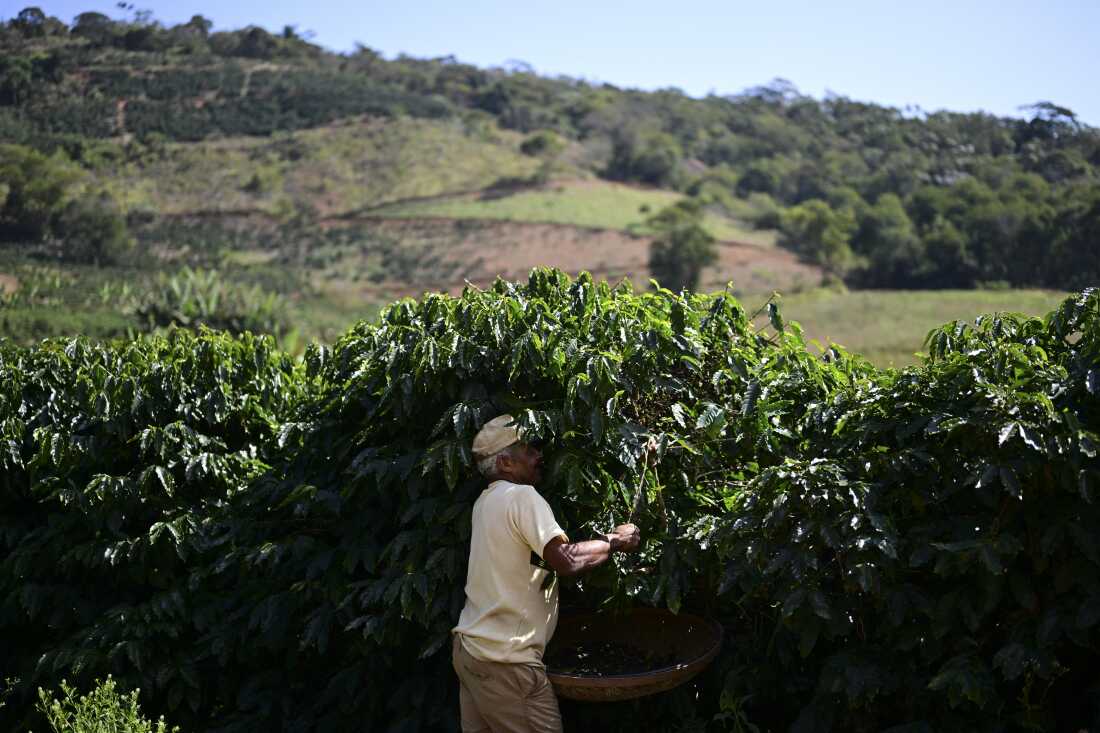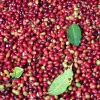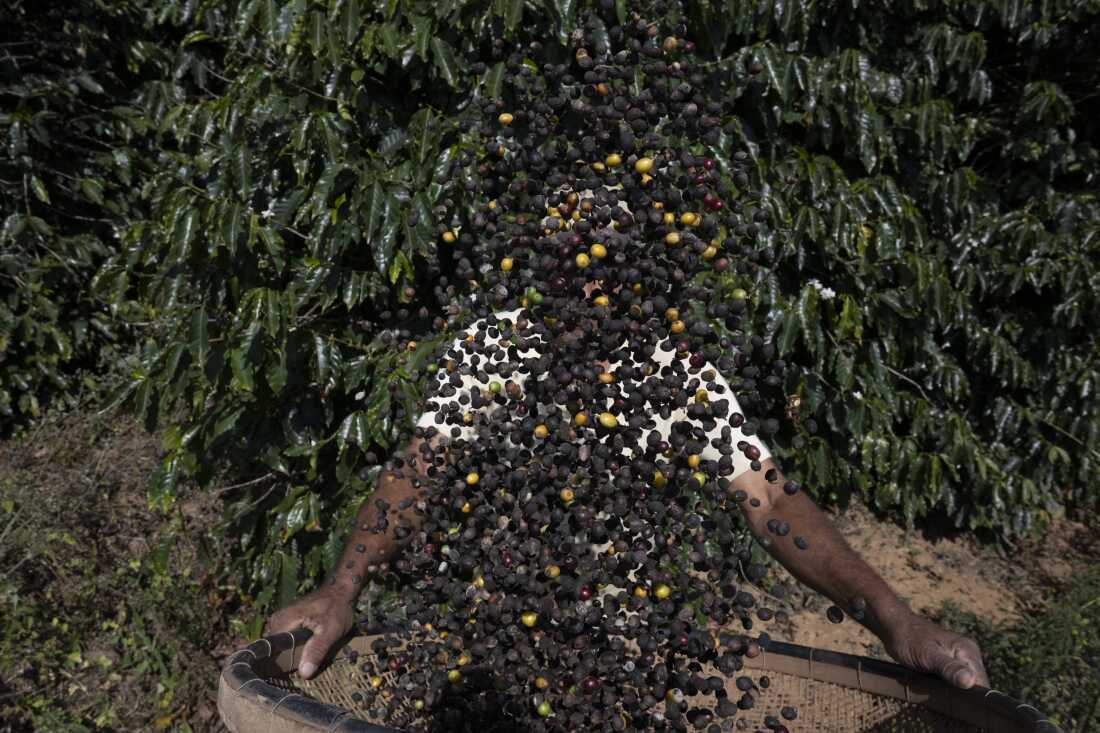 coffee consumed in the U.S.” fetchpriority=”high” />
coffee consumed in the U.S.” fetchpriority=”high” />
A coffee picker gathers beans in Rio de Janeiro state, Brazil, on July 21. Brazil is a major source of coffee for the U.S. market.
Pablo Porciuncula/AFP via Getty Images
hide caption
toggle caption
Pablo Porciuncula/AFP via Getty Images
Coffee producers worldwide are currently navigating a complex set of challenges.
In the short term, tariffs imposed by the previous U.S. administration have threatened export opportunities, compounding ongoing issues such as infestations and plant diseases that impact coffee yields. Looking ahead, industry specialists warn that the coffee sector must evolve, as it confronts a shrinking workforce and a significant reduction in viable cultivation zones due to environmental changes.
While your daily coffee ritual is unlikely to disappear soon, expect potential price increases and subtle shifts in flavor profiles.
As International Coffee Day approaches on October 1, we explore the current state of coffee production and what the future holds for this beloved beverage.

Climate Change Threatens Coffee-Growing Regions
Research from 2014 indicates that by 2050, the area suitable for coffee cultivation could be reduced by half due to climate change. This study highlights that prime coffee-growing zones in Brazil and Vietnam-the world’s top producers-may no longer support coffee farming in the future.
Brazil supplies a large portion of the coffee consumed in the United States, while specialty coffee lovers often enjoy beans from Colombia, Central America, or Ethiopia. For instance, Ethiopia could lose about 21% of its coffee-growing land as temperatures rise, according to scientific projections.
“Climate change remains the foremost challenge for coffee-growing regions,” states Sara Morrocchi, founder and CEO of the coffee consultancy Vuna.
She collaborates with farmers who are increasingly facing unpredictable rainfall, rising temperatures, floods, and droughts.
Arabica coffee, the predominant variety in the U.S., thrives at elevations typically above 1,200 meters. However, Morrocchi explains that warming climates are making lower altitude areas less suitable, forcing farmers to cultivate at even higher elevations to find favorable conditions.
Jeremy Haggar, an agroecology professor at the University of Greenwich with extensive experience in Central American coffee, emphasizes that drought poses a significant threat alongside temperature increases.
“Coffee is relatively hardy and can grow in diverse climates, but there are limits,” he notes. In Nicaragua, an extended dry season once caused widespread plant stress, with coffee bushes losing leaves and shade trees dying, which further exposed coffee plants to heat.
Morrocchi warns that as climate variability intensifies, the risks to coffee production will only escalate. “It’s remarkable that coffee plants are still thriving under these conditions,” she adds.
The Difficult Reality for Coffee Farmers
Although farmers can adopt strategies like increasing shade cover and diversifying crops to combat climate impacts, financial constraints often prevent these adaptations.
Many coffee growers live near or below the poverty threshold, and the fluctuating global coffee prices rarely reflect the true costs of cultivation. Since coffee plants take several years to mature, planning ahead is challenging when future market prices are uncertain, explains Haggar.
“Rising costs for fertilizers, labor, and climate-related damages, along with emerging pests and diseases, all demand investment,” he says.
Labor shortages are worsening due to economic pressures, migration, and difficult working conditions. Older farmers are aging out, and younger generations are reluctant to continue farming when they witness their families struggling financially, Morrocchi observes.
“It’s understandable that many young people leave rural areas for urban opportunities,” she remarks.

A coffee harvester works in Rio de Janeiro state, Brazil, on July 21.
Pablo Porciuncula/AFP via Getty Images
hide caption
toggle caption
Pablo Porciuncula/AFP via Getty Images
Experts interviewed by NPR highlight that the global coffee market structure often leaves farmers unable to earn a sustainable income. Even during periods of high coffee prices, many producers struggle to cover their costs.
Morrocchi describes this as a “vicious cycle of production and extraction” that farmers find difficult to escape.
The roots of this predicament trace back to colonialism and slavery, when European colonizers exploited enslaved Africans to work on coffee plantations.
Shawn Steiman, a coffee scientist and consultant at Coffea Consulting, points out that coffee-producing nations have historically grown coffee not for their own benefit but to supply cheap products to global markets, often at the expense of local livelihoods.
Given the extensive labor involved-from cultivation and processing to shipping and roasting-Morrocchi finds it astonishing how inexpensive coffee remains. “Coffee was never intended to be so cheap or mass-consumed as it is today,” she says.

Emerging Coffee Varieties and Future Flavors
Currently, arabica remains the dominant coffee species cultivated, but researchers are actively exploring alternatives to adapt to rising temperatures.
One promising candidate is Coffea stenophylla, a lesser-known species native to Sierra Leone, which tolerates higher heat and offers a flavor profile comparable to arabica.
Haggar, who has studied stenophylla, notes that it is still under evaluation for cultivation viability and yield potential.
“Most crops have benefited from decades or centuries of selective breeding for improved traits. We are just beginning that process with stenophylla,” he explains. Crossbreeding with other coffee species is also under consideration.
For stenophylla to become widely adopted, production must be cost-effective; otherwise, it may remain a specialty niche.
Other resilient coffee types, such as excelsa and liberica, are also gaining renewed attention and are cultivated in select regions.
Meanwhile, robusta coffee, the world’s second most produced variety, has increased its share from about 25% in the early 1990s to over 45% today. Originating from sub-Saharan Africa, Vietnam is now the largest robusta producer.
Though robusta is often described as having a stronger, more bitter taste and is commonly used in instant coffee, some producers are switching from arabica to robusta due to its superior heat tolerance.

Andrés Montenegro, sustainability director at the Specialty Coffee Association, believes robusta has the potential to attract arabica drinkers if its flavor is enhanced through innovative processing techniques.
“We’re witnessing advancements in robusta processing that improve its taste, and consumers are increasingly willing to pay premium prices for these improved beans,” he says.
Another intriguing development is synthetic coffee, produced without traditional coffee beans. For example, a synthetic espresso made from date seeds and other plant-based ingredients has been reported to closely mimic the taste of real coffee.
While arabica will remain available for years to come, farmers are actively seeking ways to adapt in the near term.
Steiman emphasizes that coffee enthusiasts will also need to expand their palates as new varieties become more common: “We must open ourselves to a broader spectrum of coffee flavor experiences.”























